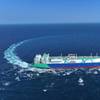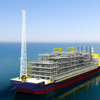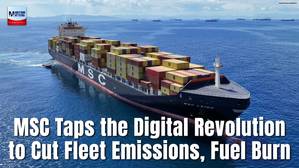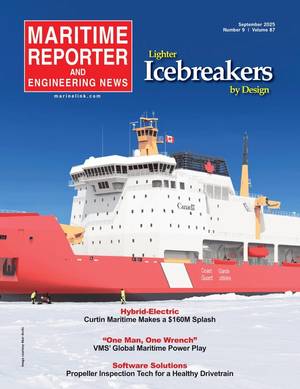After many years of work, the USCG published a Notice of Proposed Rulemaking (NPRM) for the Outer Continental Shelf Activities, 33 CFR Subchapter N, in December. This subchapter regulates oil and mineral development and production activities on the U.S. Outer Continental Shelf (OCS). It includes Mobil Offshore Drilling Units (MODU), platforms, Floating Production Systems (FPSs), and would add a host of vessels providing various support activities. A major rewrite of this subchapter was last done nearly 20 years ago and is considered long overdue because of changes in technology, particularly of the last ten years.
This new proposal has been written and reorganized to make the rules more readable and understandable by the general public following the Presidential memorandum titled Plain Language in Government Writing. In general terms, it would appear they have been reasonably successful. There is, however, a curious by-product of the plain language: We who have become expert in reading regulations seem to be having trouble obtaining a detailed understanding of the overall proposed rule package. Those of us who have studied rules for 30 or 40 years are having problems getting to the core of truth within the rules. Having said that, it still seems worthwhile to have the rules in understandable English rather than typical USCG technical jargon.
In an attempt to obtain a better feel for how the industry is responding to the proposal, the docket was examined. The docket is the repository of all public comments concerning the proposal. To my surprise, it led me to conclude others are having the same problems with understanding the proposal. The range of comments seems quite limited and focused on specific issues of concern. There are no comments addressing the broad spectrum of the proposal.
The major changes in this proposal includes areas of operations, structural fire protection, lifesaving and fire protection equipment, workplace safety and health, training, vessels engaged in OCS activities, and accommodations on manned fixed facilities.
The most remarkable thing about the project is the lack of proposed rules to govern manning and licensing of FPSs. For more than 10 years the USCG has been requiring FPSs to be manned with licensed personnel when no such licenses exist in regulations. The USCG has been operating by policy alone in an area clearly requiring regulations.
The USCG has basically been requiring modified MODU licenses and manning on FPSs. That is not to say the USCG is not responding reasonably to the needs of industry, but only that they have no regulations to do what they are doing. Such proposed new rules should have been included within this NPRM. The lack of inclusion calls to question how the USCG intends to handle the licensing and manning issues.
According to the new proposal, the person in charge of an FPS must be designated in writing. No licensing requirements. Curious! Is this really all the USCG will require with respect to licenses and manning? Certainly, existing MODU license rules are inapplicable.
Workplace safety and health rules have been proposed for a full battery of occupational safety rules concerning confined space entry, hearing, fall reduction, radiation exposure, personnel training, offshore competent person and hazard communication among others. These programs are all extensive and quite comprehensive. There are many knowledgeable about various elements of the industry that would say they go too far, at least in their current form.
The most curious part of these workplace safety provisions is they will also apply to other vessels engaged in activities on the OCS such as crew boats, offshore supply vessels and industrial vessels working on the OCS.
If this inclusion comes to pass it is not clear how the USCG will enforce this element of the rules, since under the OCS Lands Act, no violation of the act occurs until the government identifies the non-conformity and puts the violator on written notice and provides an opportunity to correct the discrepancy. The USCG is not used to operating in this manner and may have some problems making the required adjustment.
The proposal invents a new term, Mobile Inland Drilling Units (MIDUs). These units may operate in less than 30 ft. of water within 12 miles offshore in the Gulf of Mexico. They will need a Letter of Compliance from the local USCG Marine Safety Office and will have to comply with the firefighting, fire protection and lifesaving requirements for offshore platforms.
This may not be as easy as it sounds under this proposal because the proposal adds structural fire protection requirements for fixed platforms. These requirements are similar to the requirements applicable to shore side oil field fire protection schemes with the addition of a firewall between the accommodations and the well bores.
There is still opportunity to comment, as the public comment period on the NPRM has been extended until July 5, 2000.
This is an extremely complex and far-reaching proposal. Various elements of the offshore industry will attempt to have the proposal reshaped, to prevent their specific constituency from being adversely impacted. It should be quite a free-for-all. One can only watch the process unfold over the next year or two to see what the end product will be.
Charley Havnen is a Commander USCG Ret. His organization can help with vessel construction projects, regulatory problems, vessel manning issues, procedure manuals, accident analysis or expert witness. He can be reached by contacting the Havnen Group 800-493-3883 or 504-394-8933, fax: 504-394-8869.
Sponsored Content
Built for Battle. Proven by Shipbuilders.

Meet The New Standard in Underwater Connectivity

Featured videos

WCI Fights for Efficient, Effective Inland Waterway Infrastructure Funding
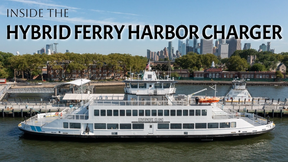
Inside the Hybrid Ferry Harbor Charger
Subscribe for
Maritime Reporter E-News
Maritime Reporter E-News is the maritime industry's largest circulation and most authoritative ENews Service, delivered to your Email five times per week





